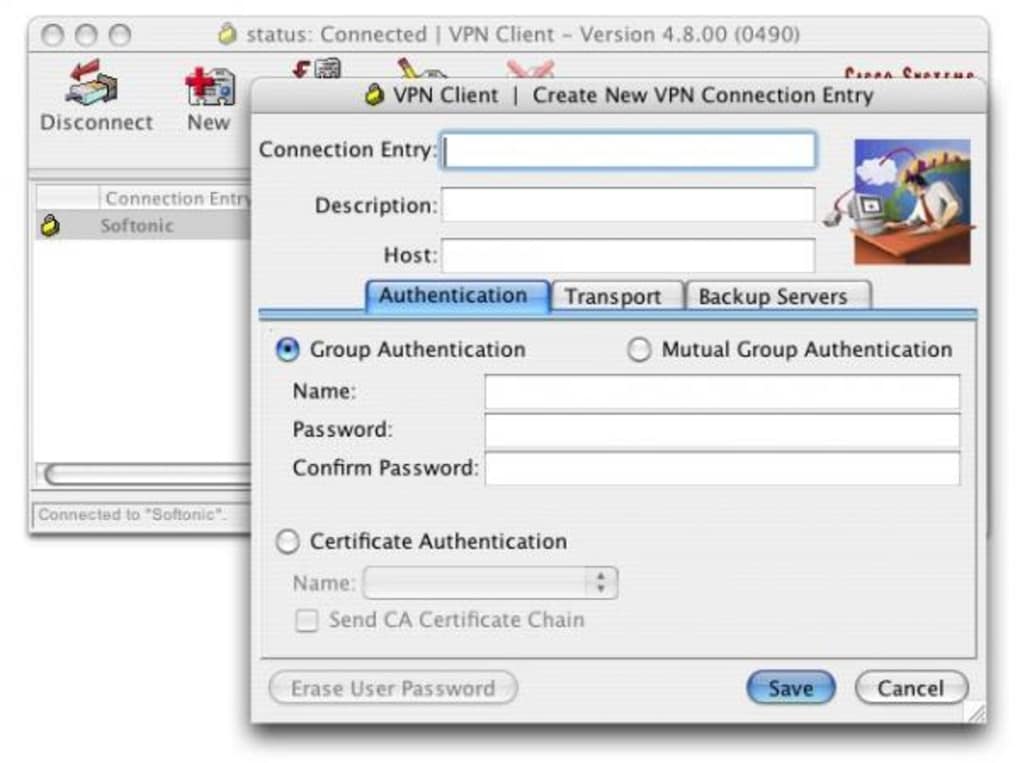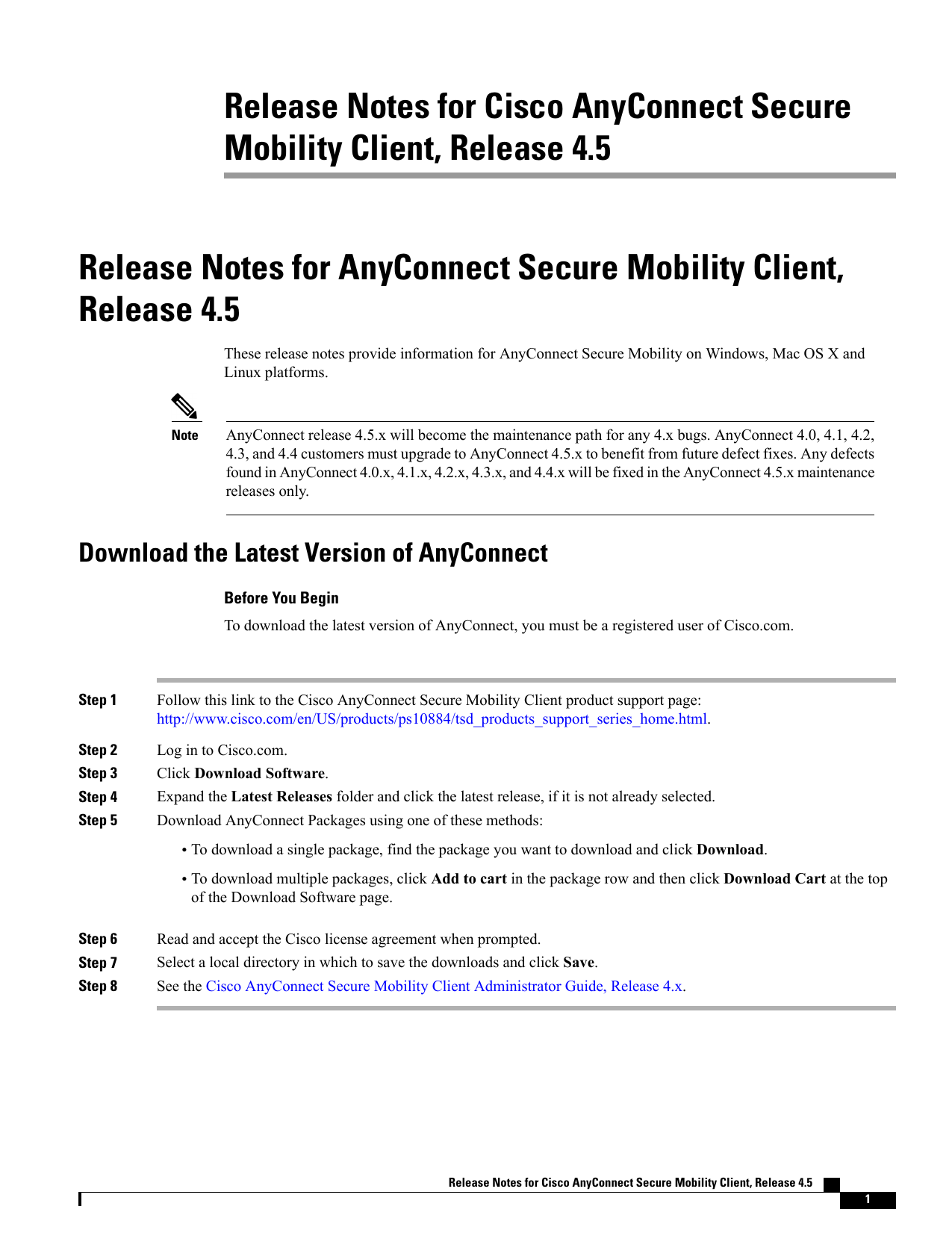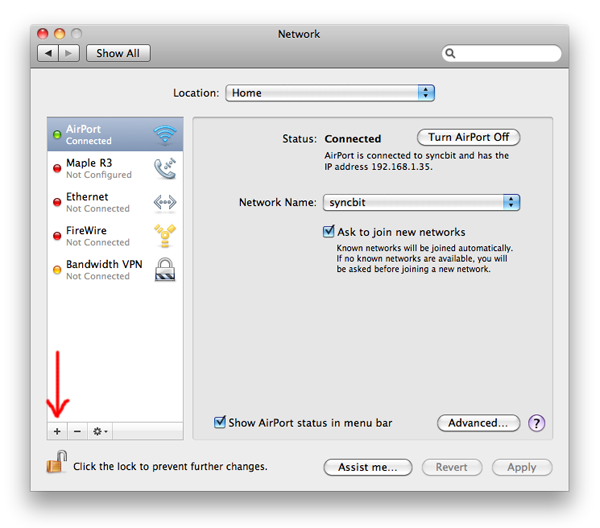Double-click the downloaded file to install the software. Cisco Anyconnect Os X Mavericks Download Location Windows. 0), Mac OS X Mavericks (OS X 1. 8 (Mountain Lion), Mac OS X 1. Lion), Mac OS X 1. Snow Leopard)and Mac OS X 1. Leopard) onwards you can use VPN Tracker, the leading VPN client for Mac OS X. Download the Mac Cisco AnyConnect VPN client via the Related Downloads box to the right on this page. Run the downloaded program. Note: the version number may be different from the screenshot above. When the installation starts, double click AnyConnect to continue. Click Continue twice.
With the AnyConnect SSL VPN client, users of Windows and Mac OS X, Linux as well as Windows Mobile, can establish a VPN connection. In order to use the VPN-connection you have to install the application Cisco AnyConnect Secure Mobility Client on your computer once. In this article we describe the procedure for the installation. We reccomend this client for Windows 10, Windows 8.1/8, Windows 7, Vista, Mac OS X Mavericks up to Sierra
1. How do I install the application on my computer?
You may install the Application Cisco AnyConnect Secure Mobility Client directly on every computer with internet access.
- Navigate to https://asa-cluster.lrz.de with your favourite browser.
- Enter your login-name and your password.
- The application will install automatically, the VPN-connection will be started.
- This procedure has only to de done once. Open the application Cisco AnyConnect Secure Mobility Client on your computer to start or finish new connecions.
2. How do I install the application on my smartphone?
- Android: go to the Android store: https://play.google.com/store/search?q=anyconnect&c=apps
- iOS: go to the Apple AppStore and search for AnyConnect
- Enter asa-cluster.lrz.de as server.
3. I cannot login!

- Your login has to be enabled for eduroam. This is true for employees and students, but not for alumni.
- Eduroam logins like ba12ced@eduroam.mwn.de do not work, use ba12ced instead.
- Eduroam login from external institutions do not work fpr VPN.
4. The installation is not working. What can I do?
There are several reasons for a failed installation, you can fix most of them on your own.
4.1 Java cannot be found or activated.

While 'Attempting to use Java' an error-message 'Web-based Installation was unsuccessful..' shows up during the installation:
- Klick on the Link below Install using the link below. An installation-program wil be downloaded on your computer.
- Manually start the installation-program.
- To start VPN, you have to start the application Cisco AnyConnect Secure Mobility Client on your computer.
- If the Connect-to-field ist empty, enter asa-cluster.lrz.de and click on connect.
4.2. My Operating-System is not supported!
Current operating-systems are supported. Older systems, which are no longer updated, are not supported
- Windows 10: Before upgrading from Win7/8/8.1 to Win10 install the latest client or deinstall the client, upgrade Windows and reinstall th client
- Windows 8.1, 8, 7, Vista, XP also in 64bit, Windows Mobile (supported devices in the release notes below). The Windows integrated VPN-client does not work with our VPN-server.
- OS X 10.12 (Sierra), Mac OS X 10.11 (El Capitan) Mac OS X 10.10 (Yosemite) and Mac OS X 10.9 (Mavericks) work with the latest AnyConnect Client.
- Mac OS X Mountain Lion, Lion, Snow Leopard, Leopard and Tiger, Snow Leopard and older do no longer work with the latest AnyConnect client, but they do have an integrated Cisco VPN client! (Info) Either you upgrade your outdated operating system or you can reinstall version 4.3 via the download portal und select the group 'AnyConnect+NoUpdate' at login.
- Linux, with 64Bit versions, libraries have to be installed later (see release notes below)
- Android on Android Store :https://play.google.com/store/search?q=anyconnect&c=apps
4.3. Windows Installation fails
Disable internet-connection-sharing (ICS)
4.4. The connection is not secure
This error-message shows up, if a certificate is missing. This happens rarely on actual operating systems.
Please check that you have installed the certificates required for the SSL connection. When you call up the page https://asa-cluster.lrz.de you must not get an error message in the browser. If an error message does appear, you can install the necessary certificates T-Telesec GlobalRoot Class 2, DFN-Verein Global Issuing CA and DFN-Verein Global Issuing as described under http://www.lrz.de/services/pki/certs/index.html. As the certificates are located on an external web server, they are stored here as copies:
Name (CN of the CA certificate) | Company | Valid until | |
|---|---|---|---|
T-TeleSec GlobalRoot Class 2 | T-Systems Enterprise Services GmbH T-Systems Trust Center | Oct 2033 | |
| crt | DFN-Verein Certification Authority 2 | Verein zur Foerderung eines Deutschen Forschungsnetzes e. V. DFN-PKI | Feb 2031 |
| crt | DFN-Verein Global Issuing CA | Verein zur Foerderung eines Deutschen Forschungsnetzes e. V. DFN-PKI | Feb 2031 |
How to install the certificates:
Windows 7, Vista and XP:
Download the certificates. After acknowledging the safety warning, double-click on the certificates to open. Click on the “Certification path” tab to see the certification status, which tells you whether the certificate is recognized as valid. If it is not, you can import it in the “General” tab. To do so, click on “Install certificate” and follow the instructions of the Certificate Import Wizard.
Linux:
The certificates must be stored in the Firefox certificate store. The easiest way to do this is to use Firefox to click on the relevant links on this page (local copies) or on the page http://www.lrz.de/services/pki/certs/index.html and confirm the import.
Mac OS X:
The certificates have to be downloaded and imported by double-clicking on the keychain.
5. Manual Installation:
- Check and, if necessary, install the necessary certificates
- Use the browser to go to page https://asa-cluster.lrz.de
- Enter username and password
- The operating system is then recognized automatically and the client download starts. Administrator rights are required for initial installation
- After installation, the connection is established immediately. In the tray (Windows) or menu bar (Mac OS X, Linux), the client can be brought to the front.
- If automatic installation does not work, the client can be downloaded via the link in the browser and installed manually. In the “Connect to:” field, you have to enter
asa-cluster.lrz.de. With Windows, you have to deactivate Internet Connection Sharing (ICS). - The client can then be started via the program menu. Local LAN access can be activated via the Preferences menu.
6. Beta and newest versions:
Experienced users can download the newest and Beta versions of the AnyConnect client via our Download Portal in the AnyConnect client – newest Beta... section.
7. Alternative Applications:
The Open Source application OpenConnect can also be used for Linux and Mac OS X. From Ubuntu Karmic (9.10), for example, this is also integrated in the Network Manager.
8. Information from Cisco:
Topics Map > Networking > Virtual Private Networking (VPN)
This page contains links to download and installation instructions for VPN software for Mac OS X
University of Illinois students, faculty, and staff can use these directions to set up their Mac OS X computers or devices to connect to the Virtual Private Network (VPN).
If you have a guest account, Technology Services recommends IllinoisNet Wireless for on-campus use. Contact your host for help downloading and installing the VPN if you need guest access for off-campus use.
Quick Start
- Download the Mac VPN installation package from WebStore.
- Install the software with administrator privileges.
- VPN server: vpn.cites.illinois.edu
- Username: Your NetID
(or, if you're a guest, your guest ID) - Password: Your Active Directory password
(or, if you're a guest, your guest password) - Group: 1_SplitTunnel_Default
(Note: This is the most common choice. See About VPN Profiles for information about the alternatives, such as Tunnel All for access to Library and WebStore resources.)

Detailed instructions are provided below.
Downloading the VPN software
- Download the Mac VPN installation package from the WebStore.
- Save the file at an easily findable location, such as your desktop.
Installing the VPN software
- Go to the location where you saved the VPN installation package.
- Double-click on the .pkg file.
- The AnyConnect Installer will launch. Click Continue.
- Accept the End User License Agreement (EULA) when prompted: First click Continue, then Agree.
- If given a choice of which packages to install, select only the VPN item and click Continue. Depending on the installer you might not be given a choice.
- The installer will estimate how much space is needed. Click Install.
- You'll be prompted that Installer is trying to install new software.
NOTE: This prompt is not asking for your NetID; it asks for your local user name and password on that specific computer.- Enter your local user name.
- Enter your local computer password.
- Click Install Software.
- After the software is installed, you'll receive the message 'The installation was successful'. Click Close.
- After installation is complete, your Applications folder will have a new Cisco subfolder containing the AnyConnect VPN.
Cisco Anyconnect Download
Starting the software
After you've completed downloading and installing, the Cisco AnyConnect VPN software will be installed in the Application folder's Cisco folder.
Logging in
When you launch the Cisco AnyConnect client, you'll be prompted to enter the VPN server you wish to connect to.
- Enter vpn.cites.illinois.edu.
- Click Connect.
When the connection process begins, you'll be asked for three pieces of information.
- Group: 1_SplitTunnel_Default
(Note: This is the most common choice. See About VPN Profiles for information about the alternatives, such as Tunnel All for access to library resources.) - Username: Your NetID
(or, if you're a guest, your guest ID) - Password: Your Active Directory password
(or, if you're a guest, your guest password)
Note: If you want to access Library resources without logging in to the Library Gateway, you should change to the Tunnel All profile.
When the VPN connects, a new icon will be added to your dock. The icon will show a lock image while the VPN is connected.
Disconnecting
When you're done using the VPN connection, disconnect it.
- Click on the AnyConnect VPN icon in your task bar.
- In the window that appears, click Disconnect.
Troubleshooting and the Statistics window
The Cisco AnyConnect VPN client gathers information that can help you with troubleshooting speed or connectivity issues. It may be helpful to open the Statistics window while troubleshooting with the Help Desk.
To open the Statistics window:
- Click the graph icon toward the lower left corner of the VPN window.
- Choose among the tabs as directed to help your Help Desk consultant with troubleshooting.
More help
Cisco Anyconnect Os X Mavericks Software Windows 10
For more help, contact the Help Desk during the Help Desk's hours of operation.